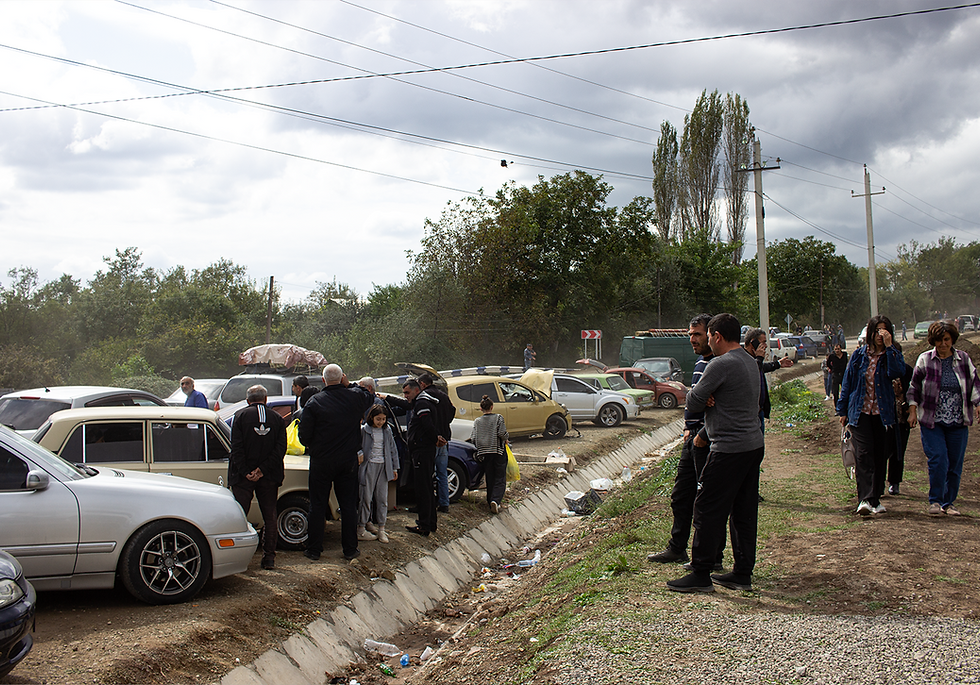Limited Government Assistance Resumes for Artsakh Displaced Families with Stricter Eligibility Criteria
- The Armenian Report Team

- Jun 3
- 3 min read

On June 1, Armenia relaunched a social assistance program for families forcibly displaced from the Republic of Artsakh (Nagorno-Karabakh). This updated program provides 40,000 AMD (approximately $105 USD) to each eligible family, with an added 10,000 AMD ($26 USD) for every family member beyond the first. The goal is to give immediate financial relief to those who were forced to flee their homeland after Azerbaijan's military assault and occupation in September 2023.
Since the fall of Artsakh, around 120,000 ethnic Armenians crossed into Armenia to escape violence, ethnic cleansing, and the destruction of their ancestral homeland. These families lost everything: their homes, jobs, communities, and cultural heritage. For nearly two years, they have struggled to rebuild their lives in Armenia—mostly without a plan from the government to ensure their survival and dignity.

At first, the Armenian state provided 50,000 drams (about $125 USD) monthly for rent and utility costs. That basic support made life possible for many. But in November 2024, the government announced devastating cuts to this aid, reducing payments to just 40,000 drams in April and then 30,000 drams ($76 USD) by July. The aid is now limited only to specific groups—children, the elderly, students, and the disabled. Working-age refugees, many of whom cannot find stable employment, have been left with nothing.
Prime Minister Nikol Pashinyan justified the decision by saying displaced Armenians must become “self-sufficient.” But this argument ignores reality: there are simply not enough jobs or affordable homes in Armenia for the thousands who arrived overnight.
Deputy Prime Minister Tigran Khachatryan defended the decision by claiming the aid discouraged participation in a long-term housing plan launched in 2024. That program offers between 2 and 5 million drams ($5,000 to $13,000 USD) to help families build homes in rural Armenia. But so far, the results speak for themselves: only 900 families have applied, and just 100 have secured homes.
Refugees say the money isn’t enough. In a country where land, labor, and building materials are expensive, these grants do little to make real home ownership possible. Most displaced people now live in overcrowded apartments in and around Yerevan, where rents are high and employment is competitive.

For many, the government’s failure to act feels like betrayal. On March 29, thousands of refugees gathered in Yerevan to protest the housing aid cuts. Their demands were clear: restore the full financial support and develop real, practical housing solutions.
The relaunch of the June 1 assistance program is a step in the right direction—but it is far from enough. The program only helps families who meet strict criteria: they must not live in government housing, must have no recent-model car, and must prove extremely low income (less than 55,000 AMD per person). For many displaced people, meeting these qualifications is difficult, especially with inconsistent paperwork and unclear rules.
Even those who qualify receive little. A family of four might get 70,000 AMD—a little over $175. But for a refugee family who lost everything, and now pays high rent, food, and school fees, this sum disappears quickly.
Moreover, these aid programs come and go without a long-term national strategy to support displaced Artsakh Armenians. Meanwhile, nearly 27,000 of the original 120,000 refugees have already left Armenia—many for Russia, Europe, or North America. Some have returned, but over 11,000 have not. These departures represent more than just emigration—they signal hopelessness.
By slashing aid and offering unworkable “solutions,” the Armenian government sends a dangerous message: that the survival of these citizens is a burden, not a priority. In reality, helping them should be seen as a moral duty—and a strategic investment in Armenia’s future.
—
Support independent reporting from the region by subscribing to The Armenian Report. Our team is funded solely by readers like you.






Comments